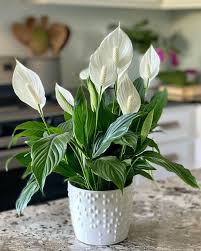How to Water Your Peace Lily the Right Way
Georgia Lynn
Contributing Writer
Watering a peace lily might seem simple, but it’s a task where many plant lovers go astray. This elegant houseplant, known for its lush green leaves and stunning white blooms, thrives on proper care—especially when it comes to watering. Overwatering or underwatering can lead to common issues like drooping leaves, yellowing, or even root rot. To keep your peace lily vibrant and healthy, understanding its unique watering needs is essential.
If you’ve ever struggled with a wilting peace lily or found one mysteriously dying despite your efforts, chances are the issue stems from improper watering. By mastering the correct techniques outlined in this guide, you can ensure your peace lily flourishes, becoming a beautiful centerpiece in your home.
1. Learn Your Peace Lily’s Watering Preferences
Peace lilies originate from the tropical rainforests, where they grow under a canopy of trees. This environment provides them with consistent, moderate moisture—not too dry and not overly wet. Mimicking this natural setting is key: the soil should remain moist but never soggy.
2. Test the Soil Before Watering
Before you water your peace lily, always check the soil. Insert your finger about an inch deep:
- If the soil feels dry, it’s time to water.
- If it’s still moist, hold off for another day or two.
This simple method helps prevent overwatering, a common mistake that can lead to root rot and plant decline.

3. Water Deeply and Evenly
When you water your peace lily, don’t just sprinkle a little water on the surface. Instead, water thoroughly until you see excess water draining from the bottom of the pot. This ensures the entire root system receives hydration, promoting healthy growth and preventing plant stress.
4. Ensure Proper Drainage
Peace lilies are particularly sensitive to waterlogged soil, which can suffocate roots and lead to disease. To avoid this:
- Use a pot with adequate drainage holes.
- Choose a well-draining potting mix, such as one with peat moss, perlite, or bark.
Proper drainage is critical to maintaining the plant’s health and preventing root rot.
5. Adapt to Seasonal Needs
Your peace lily’s water requirements change with the seasons:
- Spring and Summer (Growing Season): The plant will need more frequent watering as it actively grows.
- Fall and Winter (Dormant Period): Watering can be reduced, as the plant’s growth slows.
Always rely on the soil test method to assess your plant’s real-time needs rather than sticking to a strict schedule.
By following these practical steps, you’ll give your peace lily the moisture it needs to thrive while avoiding common pitfalls. Proper watering not only ensures vibrant foliage but also supports the production of those signature white blooms. With a little attention and care, your peace lily will reward you with its timeless beauty.
Happy gardening!
